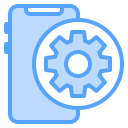Performance, Rendering, and Native Feel
Flutter draws every pixel via Skia, producing consistent visuals and smooth animations. React Native composes native views driven by JavaScript, benefiting from platform widgets. .NET MAUI uses native controls through handlers. Knowing your renderer clarifies trade-offs in fidelity, consistency, and integration complexity.
Performance, Rendering, and Native Feel
Ahead-of-time compilation can improve startup but may increase binary size; JavaScript runtimes trade flexibility for overhead. Hermes reduces React Native memory and launch time. Tree shaking, code splitting, asset optimization, and split binaries help meet store constraints and keep cold starts pleasantly fast.







